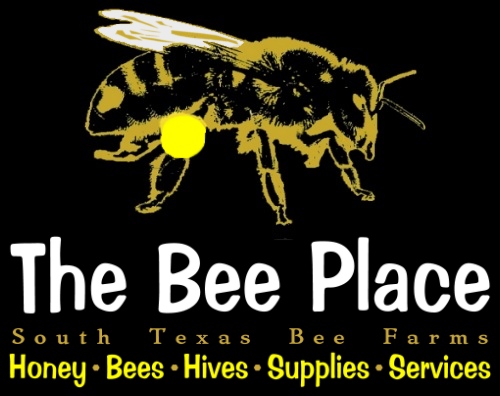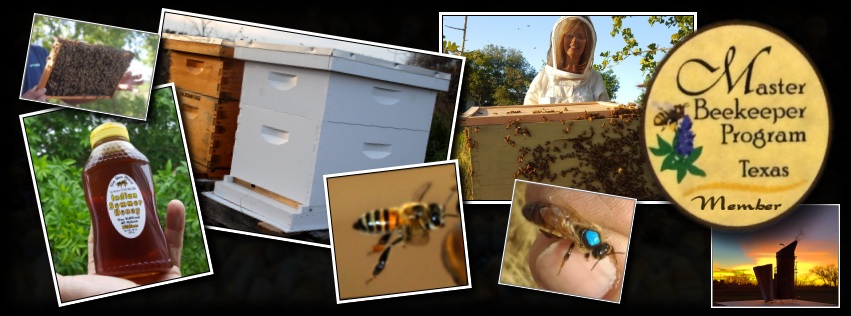|
 |
|
Beekeeping Basics - Honey Bee
Educational Information
& Resources
This is the companion page to our
Beekeeping Basics Group Class with
"hands on" training
|
Welcome to the fascinating world of
beekeeping!
Whether you are a new beekeeper in your first year
with your first colony of bees or perhaps considering getting into beekeeping and
simply looking for more
information, we are here to help. Hopefully you will find the information here useful
and practical. We'll start with the basics and also provide options for
continuing your education beyond the scope of this "basics" page.
Feel free to use the tools and resources below as a basic guide for this
unique adventure.
There a few basic, yet very important things for keeping
healthy bees and strong colonies.
-
We want to make
sure, by checking our hives about every two to three weeks in the warm months to
make sure that the hive has a healthy and vigorously laying queen in the colony.
Replacing the queens as needed, typically every year, but some last as long as two or three years.
-
We feed our bees when
there is little to no forage available and / or when the
colony is young and just getting starting. (i.e. a Nuc, short for Nucleus - which
in the bee world is likened to the "puppy stage") A colony can consume
a gallon a week or more when there is not much in the wild. We feed weekly during a dearth until the bees stop taking the syrup, with the
goal of building up 40 + lbs of stored food in the hive before winter.
-
We monitor / check and treat for Varroa
mites as needed, typically treating up to 4 times a year, depending on the number of mites in the hive. We use an
alcohol wash (instead of a sugar roll) method to check the mite loads of the colony.
We check the mite level then treat with an approved mite treatment as needed.
It's a good idea to alternate treatment methods to minimize the mites become resistant to
any one of the available products.
Many beekeepers have started using a new product called VarroxSan, which is an extended release method containing
Oxalic Acid and Vegetable Glycerin which is organic and is safe to use while the honey supers are on the hives.
Some beekeepers use Oxalic Acid Vapor (OAV) when the amount of brood in the hive is low
and very small amounts of capped brood are available for the mites to hide under.
There are a few more approved products on the market that work well, like HopGuard3 (made from Hops),
ApiLife Var, (thymol, eucalyptus oil, L-menthol, and camphor), Apiguard (Thymol Gel) and Formic Pro (Formic Acid)
are other organic options, but Formic and Thymol are temperature sensitive.
With the current application methods for Formic based treatments, the weather should be 85f and below for the
duration of the treatment, or queen and brood damage can occur. So formic is best used as a cold
weather / winter treatment, at least until they develop another application method that is not hard on bees
in warm weather. Always check and go by the labels of all miticides.
A popular synthetic treatment option that has worked well historically is called Apivar which is easy to apply and
can be used when the the brood productivity is high. (view mite control options here
Miticides )
- Last but not least,
we want to be mindful about "robber bee" activity. A young starter colony
is especially susceptible to being robbed by other bees when there is not
a lot of resources available in the field. There are robber prevention
devices available commercially, but they are not difficult or expensive to make.
Doing these things will help you become a successful beekeeper.
If we ignore any one of these things, we run the risk losing the entire colony of bees.
We are part of the
Texas Master
Beekeeper Program (TMBP) and encourage anyone with a desire to learn more about
bees and share their knowledge with the general public to join this program.
The TMBP website
has all the information and study guides you need to become a Master
Beekeeper!
Because of the overwhelming amount of information
available online (much of which is conflicting and region specific)
and how it can be difficult to know what to believe and
what to avoid, we suggest sticking with trusted sources such as universities
and the well established sites.
We are often asked about finding a mentor to help beginning beekeepers and
those that are still undecided if beekeeping is even in their future. We
realize this is a big decision for many and to assist, we have created a
Beekeepers Mentor Network. We sponsor a Facebook group designed to bring
potential Mentors and Apprentices together.
Follow this link to view and/or join the group:
www.facebook.com/groups/BeekeepersMentorNetwork/
Download and Print our
Bee Health Certificate here (PDF format) |
Frequently Asked Questions (about the basics)
- How often should I inspect my hive and
what am I looking for?
- In the warmer months, every two to
three weeks
is ideal. Review the Hive Inspection Checklist (found in the
Downloadable Files linked below) A
quick check to see if the hive has food (pollen, nectar and honey) and
brood (eggs and developing stages of larvae and capped pupae), when these are present,
this is often all that is
needed. If any of the above is not present, or has an unusual odor,
color or appearance, further investigation is needed. When the existing space reaches around
75 percent, we like to add another box with frames to allow the colony to continue
to grow and expand the food storage area and brood nest. Otherwise, the bees
will get the urge to reproduce. The existing queen will lay special eggs (called queen cells)
so the colony can raise a new queen and she will take around 2/3s of the worker bees and find a new
home site. This is called swarming and can be prevented with proper hive management.
- What do I feed my bees?
- Nectar Subs: In South Texas we feed "1 to 1 sugar syrup"
which is a 1:1 ratio of regular plain white granulated table sugar (not
powdered or any other form of sugar or molasses) mixed with water. One cup
of sugar per one cup of water. Heating the water to a boil to eliminate
impurities (when using metro city water sources) and help the sugar
dissolve easier. Allow to cool of course before feeding.
We also may add a product like Pro Health™ Feeding Supplement with
Essential Oils which aid in the overall well-being of colonies and
prevents syrup fermentation. A teaspoon of bleach per gallon of syrup also helps
prevent syrup fermentation and mold growth. (Sugar water will ferment in about 2 weeks
if not treated)
- Pollen Subs: While there are a number of
Pollen Substitute options available, they are not often needed in the spring.
The options range from low to high protein content and it can be in the form of
a dry power to "wet" patties (about the consistency of peanut butter).
Caution should be used when using patties due to Small Hive Beetle issues in our area.
Think bacon strips vs hamburger patties and roll out the patties or cut into soda straw portions
to make thinner servings - less space for hive beetles to infest and lay eggs.
(Check patties for beetle larvae and remove as needed.)
Note: Pollen patties should be placed on top of the brood frames directly
above the developing brood to allow immediate and easy access by the nurse
bees that are feeding young.
- Additional Subs: Melliferaboost ® is
a proprietary blend of a functional protein, plant flavonoid, nutraceutical,
phytosterol, and essential oils in an invert sugar base. Melliferaboost® has
the benefit of allowing more eggs to reach maturity, aid in bees attaining
a heavier overall body weight, helps fight a multitude of brood ailments,
also helps in protecting the bee gut environment while boosting the bee’s
immune system. The ingredients in Melliferaboost® help to supplement the
nutrients missing from artificial diets, helping to stimulate their immune
and detoxification genes.
- How and when do I treat for Varroa Mites?
- Most experts agree that the Varroa
mites are the biggest challenge beekeepers face today. As discussed above, there are many
treatment methods available. Some considered to be more effective than
others based on several variables, such as the time of the year and
status of the hive. There are several organic miticide options available, like
the versions discussed above, which are our first choice / line of defense.
There are two basic types of mite treatments that are similar in uses and requirements to
flea treatments for dogs. Understanding these will help in deciding which type to use and when.
We have two basic options available, one type is what we consider a flash treatment, like a
flea bath when the problem is major. The other being an extended release treatment, more like the
flea collar or drops that are used when there is not a huge infestation and is more for maintenance.
- Synthetic miticides are often used as
a last resort in an integrated pest management (IPM) system and should
always be used according to the label.
- Again, Formic Acid has a high efficacy rate,
but is temperature sensitive and must not be used when the daytime high
will reach or exceed 85 degrees Fahrenheit during the treatment process
- typically 7 days with one version. The other offers two treatment
options:
Option One: 2 strips for 14 days.
Option Two: 1st strip for 10 days remove and replace with 2nd strip for
an additional 10 days.
- Oxalic Acid offers a few different
application methods that have been proven to be successful mite
treatments. The first was the "dribble" or drench method, then came what
is termed vaporizing, or more accurately called sublimation of the
powdery acid into a fog or vapor. More recently, the extended release version of OA and
Vegetable Glycerin on cardboard (chip board) strips has been approved and shows the most promise
when the numbers are in check and is consider a prentitive maintenance vs a corrective method.
-
Vaporization of the acid with a heat source is one of the
approved method. Always use a 99% pure form of Oxalic Acid, aka wood bleach, which can be purchased at
many small hardware and paint stores or ordered online. Use an
Oxalic Acid Vaporizer to sublimate (The process of changing from a
solid to a gas without passing through an intermediate liquid phase.)
the acid inside the hive.
Most of the flash treatment methods require applying them two, three or even
more times using a back to back application of the miticide to complete a
full treatment and achieve a good mite knock down. Meaning, some require treating
every four to five days for three to four treatments to get results.
This is because most miticides (except Formic) do not penetrate the cappings
covering the developing young pupating bees, which is where the bulk of the mites
are hiding and laying eggs for nearly two weeks, thus reproducing at high rates.
We like to treat in early spring before the nectar flow, again in the late summer after the
nectar flow, after honey supers are removed and again late fall to
prevent over wintering bees from housing heavy mite loads.
(More about Varroa Mites below)
|
|
 |
|
These are the topics we cover in our Basic
Beekeeping group class.
Please note: Prior to Covid-19, the class was approximately four hours in length (including
breaks) with the lecture part being held in the fellowship hall of our local church.
When Covid arrived, we recorded the first two hour - classroom session and made
a short YouTube video series that discusses the basics of beekeeping equipment,
the life cycle of the honey bees and the mites and other hive pests.
However, even with the threat of COVID-19
behind us, we are still using a recorded version of the 1st lecture sessions and have made the
recordings available online via YouTube in a private video series.
Once we receive a payment for the class, we will provide a link to a 5 part
mini series and instructions along with the address for the final part of
the class.
We still have the hands-on session, over an active open
hive, in person at our location on the listed pick up / class dates.
Here's what we'll discuss:
- Equipment
- Hive Setup
- Component Arrangement and Placement
- Hive Maintenance
- How often and what to look for
during inspections
- Life Cycle of the Honey Bee
- Supplements
- What, Where, How, When and Why
- Pests and Diseases of the Hive
- Identification, Prevention &
Treatments
- Varroa & Tracheal Mites
- Swarm Prevention
- What is all the buzz about
- Harvesting Honey
|
|
 |
|
Below are several images that
show the various components from inside a hive. (click to enlarge)
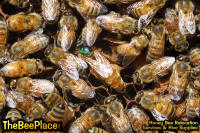 |
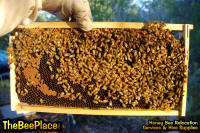 |
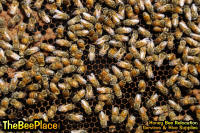 |
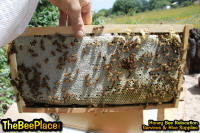 |
| Queen with Green Mark |
Deep Frame of Bees |
Brood w/Nurse Bees |
Frame of Capped Honey |
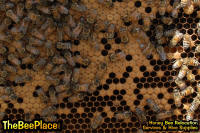 |
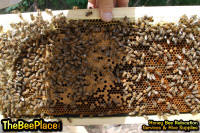 |
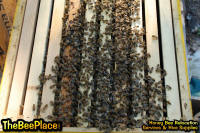 |
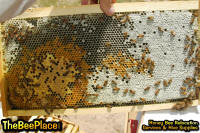 |
| Capped Brood |
Brood, Nectar & Pollen |
5 Frame Nuc - After Installation |
Mixed Frame |
| |
|
|
|
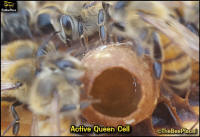 |
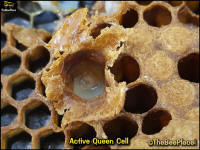 |
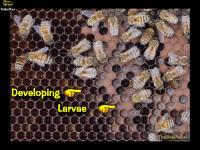 |
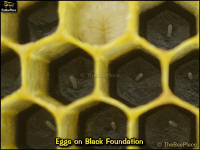 |
| Active Queen Cell |
Active Queen Cell - Exposed |
Developing Larvae - Brood Nest |
Worker Bee Eggs - Close Up |
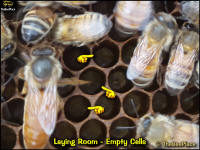 |
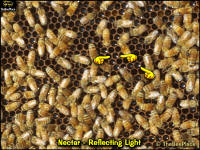 |
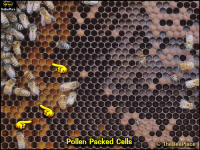 |
 |
| "Laying Room" with Queen |
Nectar in the Nest |
Pollen around the Brood |
Swarm Cells - Frame Bottom |
|
|
Below are a few images from around the web that you
may find useful,
informative and interesting.
(click to enlarge)
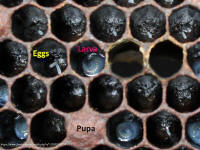 |
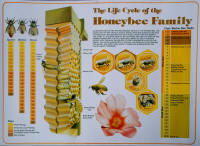 |
 |
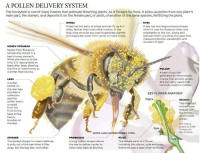 |
| Brood |
Bee Family Life Cycle |
Worker Bee Life Cycle |
Pollen Delivery System |
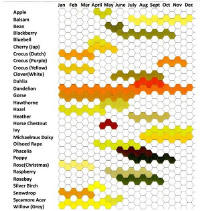 |
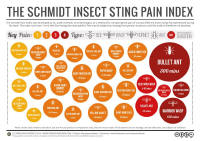 |
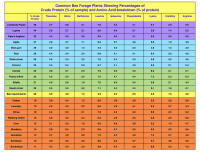 |
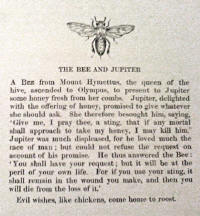 |
| Pollen Guide |
Sting Pain Index |
Common Bee Forage Plants |
The Queen Bee And Jupiter |
|
|
Much of the information available online and even in the
books about beekeeping (see
Recommended Reading List below) is written by
folks in a colder climate than we have here in South Texas. Therefore,
we like to share two simple and basic, yet very informative PDF files
written by Mr. Freeman, an old school southern beekeeper. The adjustments
needed to match our climate are minimized with Mr. Freeman's information.
These files and the information within compliment our
basic beekeeping classes. Scroll down for additional links and resource references
that offer more comprehensive
information for further studying for the beginner and novice alike. |
|
Advanced beekeeping information
|
|
Downloadable Files
( courtesy of Mr. Freeman -
www.freemanbeetletrap.com )
Feel free to download and print these files. As with any other beekeeping material, the
information is mainly intended as a general guide more so than a "how to" for
everyone. Since each person's goals and circumstances are different, each person
will adopt the things that work best for their individual purposes.
Remember, when it comes to nature, nothing is written in stone.
|
|
 |
|
More about the Varroa Mites:
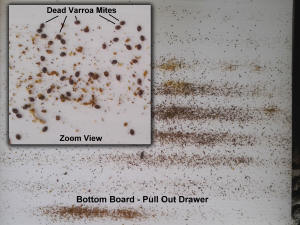
This image shows a pull out drawer from under a hive
after a treatment using the above mentioned OAV method.
Click the image to see the full size version.
Varroa destructor
"Varroa destructor (Varroa mite) is an external parasitic mite
that attacks the honey bees Apis cerana and Apis mellifera. The disease caused
by the mites is called varroosis." ...
more
(From Wikipedia, the free encyclopedia)
"The Varroa bee mite (Varroa jacobsoni) was first discovered by
A.C. Oudemans in 1904, as a parasite of the Asian honey bee, Apis cerana. In the
late 1940s, Through movement of the western honey bee, Apis mellifera, colonies
into and out of Asia, Varroa mite became established on honey bees first in
Africa and then in Europe. Quickly, it spread around the world. It was first
detected in the U.S. in 1987; Mexico and Canada quickly closed their borders to
U.S. bees. Varroa has now been in the U.S. for over two decades and a robust
history exists published in two parts" ...
more (source The Apis Information Resource Center website )
Since their introduction into this country, some 35+
year ago, beekeepers and scientist have been searching for ways to control and
eliminate this disease spreading pest. After several years of
using chemicals in the hives, which many beekeepers are opposed to for obvious
reason including the limited success. In 2015 the EPA approved the use of the
above mentioned Oxalic Acid Vapor as a safe treatment method. As a side benefit,
the vapor also eliminates another pest called the
tracheal mite.
|
|
 |
Additional Educational Information
Visit Randy Oliver's Website
www.ScientificBeekeeping.com - Beekeeping Through the Eyes of a Biologist
Randy is a research biologist and commercial
beekeeper with a wealth of information from basic to advanced level.
He is also a renowned speaker and writes regularly for the American Bee Journal Magazine.
Topics include:
|
|
The good folks over at Honey Bee Health Coalition have put together a very extensive guide on Varroa Mite Management which includes videos and downloadable guides in both English and Spanish.
Recommended Reading Material:
Reading Lists
Suggested Reading List for Beginner Level
Books
1. Honey Bees and Beekeeping: A Year in the Life of an Apiary, 3rd Edition –
Keith Delaplane (2007)
2. The Beekeeper’s Handbook, 4th Edition – Diana Sammataro, Alphonse Avitabile, Dewey M. Caron (2011)
3. First Lessons in Beekeeping – Keith Delaplane (2007)
4. The Backyard Beekeeper: An Absolute Beginner’s
Guide to Keeping Bees in Your Yard and Garden – Kim Flottum (2010)
5. Honey Bee Biology and Beekeeping – Dewey Caron (2013)
Periodicals
1. American Bee Journal
2. Bee Culture
3. Melitto Files Newsletter
Suggested Reading List for Advanced Level (in addition to those listed for the
Beginner Level)
Books
1. The Hive and the Honey Bee – Dadant and Sons, Inc. (1992)
2. ABC & XYZ of Bee Culture – A.I. Root (2007)
3. Honey Bee Pests, Predators, and Diseases, 3rd Edition – A.I. Root (Morse and Flottum, eds.) (1998)
4. The Biology of the Honey Bee – Mark Winston (1991)
5. Bee Pollination in Agricultural Ecosystems – Rosalind James and Theresa L.
Pitts-Singer (2008)
|
|
 |
|
Additional Related Informative Pages:
-
Different Types of Bees -
what is currently available
-
About Africanized Bees - what
you should know
-
About
Apitherapy - Basic information with
additional resources and links
-
About
Ag Exemption - Texas law now allows
the use of honey bees as a way of saving tax dollars
The Texas A & M AgriLife Research - Apiary Inspection
website and the Honeybee Lab
website at A & M both provide a wealth of additional resources.
As mentioned above, we are part of the
Texas Master
Beekeeper Program and encourage anyone with a desire to learn more about
bees and share their knowledge with the general public to join this program. The
TMBP website has
all the information and study guides you need to become a Master Beekeeper!
University of Florida Bee Lab Website
www.UFhoneybee.com
Updated 6/22/2025
. . . more to come . . .
|
|
|
|
• The Bee Place Home Page •
Follow us on Facebook
• TheBeePlace Facebook Page •
Beekeepers
Mentor Network •
|
|
 |
|
